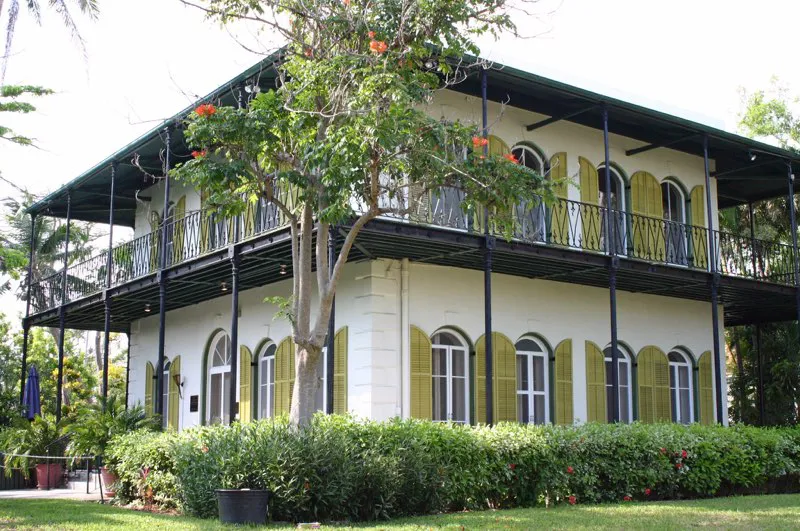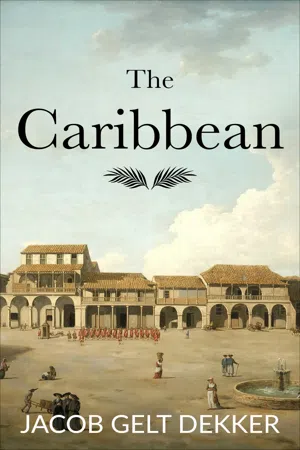Changes in latitude. Changes in attitude. - Jimmy Buffet
A King comes to visit
King Abdullah II of Jordan and his entourage drove down US 1, a parade of twenty heavy motorbikes, or sleds, as they are called in bikers’ jargon. All riders were clad in colorful leather, heavy boots, and black helmets. It was impossible to make out who was the king. Secret Service agents rode on the sissy bars, the passenger’s backrest. Someone pointed out that the king rode his sled alone. It was March 1, 2008, when the odd bikers’ parade rolled into Key West, followed by a lengthy motorcade of limousines, ambulances, police cars with bomb-sniffing dogs and Navy SEALs.
The motorcade produced a deep roar that carried for miles, like Flagler’s cargo and Havana Express trains once thundered over 150 miles of tracks, overpasses and bridges. The thunder carried over the blue Atlantic Ocean to the south and the murky Gulf on the north side of the highway.
King Abdullah II of Jordan
Bob and Martha Sauer, a local attorney and his watercolorist wife, both well into their eighties when I met them, remembered how the Flagler Express could be heard nearly an hour before it arrived at Key West. Upon arrival, the whole town would be at the station peddling anything from bed & breakfast rooms, cigars and sponges to prostitutes to half-intoxicated tourists from New York on their way to a week of gambling in Havana.
In the king’s entourage there was no rippin’ up of the asphalt, no loud explosions from double-barreled shotgun exhaust pipes, or back-wheel riding acrobatics of any kind. The king had promised an old school friend who lived in Key West to come down for a hamburger and a Coke, and so he did.
We all watched him in awe in the backyard of the friend’s house, as we, the lucky ones who had also been invited, chewed on our own burgers. We were all standing, and there was no pretense. I had met the king before, in Wadi Rum with the Seven Pillars mountain formation in the south of Jordan, from where the legendary Lawrence of Arabia launched his attack on Aqaba. The king had been clowning around with one of his prized possessions on the five-star motorcycle trek, where bikers tell me they have the best ride of their lives. But King Abdullah was not the only biker who rode to Key West with a large following.
For 40 years, the annual Key West Poker Run charity had brought 10,000 bikers to the southernmost town of the United States. Every year, traversing the Florida Keys Overseas Highway, a giant army of bikers takes over the 126-mile road that connects the Keys to the South Florida mainland. The road has 42 bridges, spanning the waters of the Atlantic Ocean, Florida Bay and the Gulf of Mexico.
Sloppy Joe’s bar, once Ernest Hemingway’s alcoholic hangout, is full from breakfast till way after midnight. Since the 1940s, Ernest’s watering hole has become the midpoint of the Duval Street bar crawl. A huge crowd of bikers, mixed with gay bears and leather men, parade up and down between the Gulf Coast and the Atlantic shores, partying all night. Rows of shining bikes on each side of the street stretch from coast to coast.
A similar Mardi Gras atmosphere builds around the annual Hemingway look-alike contest. Thousands of contestants and their supporters congregate in bars and pubs to cheer on their champions. Every year, a perfect look-alike, white-haired and with a beer-bellied body, is elected. The tipsy local audience, supported by millions around the world who watch the event on CNN, witnesses a parade of look-alike Hemingways walk up and down the runways like high-fashion models; in Sloppy Joe’s, Ernest Hemingway is alive and well.
Bourbon Street Mardi Gras partying has become the main industry in Cayo Hueso, as Spanish settlers called the island, referring to the bones of the Calusa graves. Once the Calusa tribe inhabited the Florida Keys, but the very last key in the south, Cayo Hueso, was a sanctuary for the dead only, to be treated with the utmost respect. Entering without the prescribed rituals was punishable by death.
Today Cayo Hueso is a barrio in Havana, Cuba, for Key West migrants. Carousing tourists are far from the sanctity of the Calusa burial grounds, and the sophisticated literary tradition that Hemingway brought to the island.
Hemingway
When Ernest Hemingway arrived at Key West aboard a steamship from Cuba in April 1928, the remote coral isle had no literary community. Key West was no more than a shabby Florida outpost of fishermen, rum runners, and square grouper-fishermen-drug-smugglers. Not yet connected by a continuous highway to the mainland, Hemingway and his pregnant wife, Pauline, came to Key West from Paris. Pauline’s uncle Gus had ordered a Ford Model A for them to drive north. The Ford had not arrived.
The Trev-Mor people - short for Trevor and Morris - put up Hemingway and Pauline at the Trev-Mor Hotel. Two weeks later, when the Ford finally got there, Hemingway was sold on Key West and would not leave till years later. For two years, the small second-floor apartment in the Casa Antigua, then known as the Trev-Mor Hotel and Ford dealership, became their home.
Hemingway house - Andreas Lamecker, Wikimedia
In April 1931, Ernest bought his famous home on 907 Whitehead Street, in Bahama Village - with segregation still at its peak, a no-go area for whites. Hemingway could not care less. The property was cheap and his budget limited. Broad covered galleries, deep Caribbean-style porches, wrought-iron balusters, and green shutters became the enchanting place for the Hemingways to entertain locals, visitors, friends and family. Ernest built a brick wall around the property to keep out the roaming chickens; Pauline bred cats, a special race with an extra toe.
This was the birthplace of the new, literary Key West. Ernest remained there till 1939 when he moved to Cuba with a new wife. Pauline and her children remained in the two-story house till her death in 1951. Ernest committed suicide in 1961.
Many followed in Hemingway’s wake, including Tennessee Williams, John Hersey, Philip and Richard Burton, and Jean Carper. “In Key West, we have Pulitzer Prize winners tripping over one another,” joked Ross Claiborne, a retired New York City publisher. “There's a writer behind every bush.”
Key West has become the mecca of the American literary world, with a constant stream of visiting Nobel and Pulitzer Prize winners, as well as at least one hundred resident writers. The old town with its white clapboard, Bahamas-style, American Neo-Gothic and Cuban cigar makers’ houses has become a tourist destination for millions every year. This stage, filled with extremes, was Key West and my home.
Bahama Village sisters
Two Bahama Village ladies, Geeah and her younger sister Julie, drew my interest. For years, the two sisters ran a little coffee and breakfast stand on Petronia Street in the middle of the village. The food was formidable, the coffee strong, and the ladies attentive, present and consistent. I never found out what language they spoke beyond some basic English to serve their regulars. Bahamian Creole of sorts, I guess, with some Seminole words and a dialect spoken on Turks and Caicos. It hardly mattered since we had a perfect understanding. Their caring was unmatched; I returned as often as I could and they gradually became part of my daily support system.
One time, when I got seriously ill, their actions were extraordinary. Geeah found me one of her relatives, Janeisha - whom I soon called Jan - a wonderful live-in nurse who also cooked. She was as stout as Geeah, with greying hair over a pitch-black face. Jane also spoke the mysterious Bahamian Creole. The sound of her voice was sonorous, and for me, most of the time on large doses of morphine, it became a solid anchor in the ocean of delusional tribulations.
One day, when I asked her to cook my favorite dish of devilled lamb’s kidneys, she did not blink an eye. I do not know where she found the kidneys since supermarkets had long stopped carrying offal in the US, but for Nurse Jane that was hardly a challenge; the house smelled of kidney stew for days.
How did these women and their families make it to Key West at a time when segregation was still in full force? The island was a most unfriendly environment for all blacks. Nance Frank, a local gallery owner, born and raised on the island and considered a true Conch, told me that they were descendants of loyalists of King George III. In 1783, when England recognized the new Republic of the United States, not everyone was happy, and many loyal to the British, or afraid of the colonial rebels, f...




